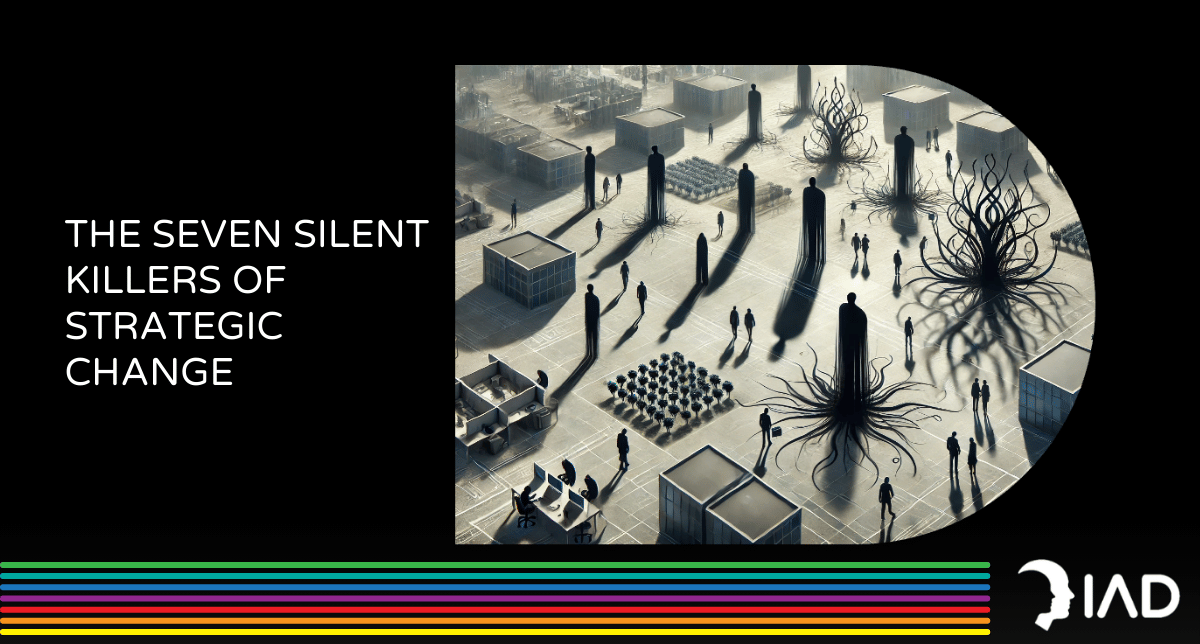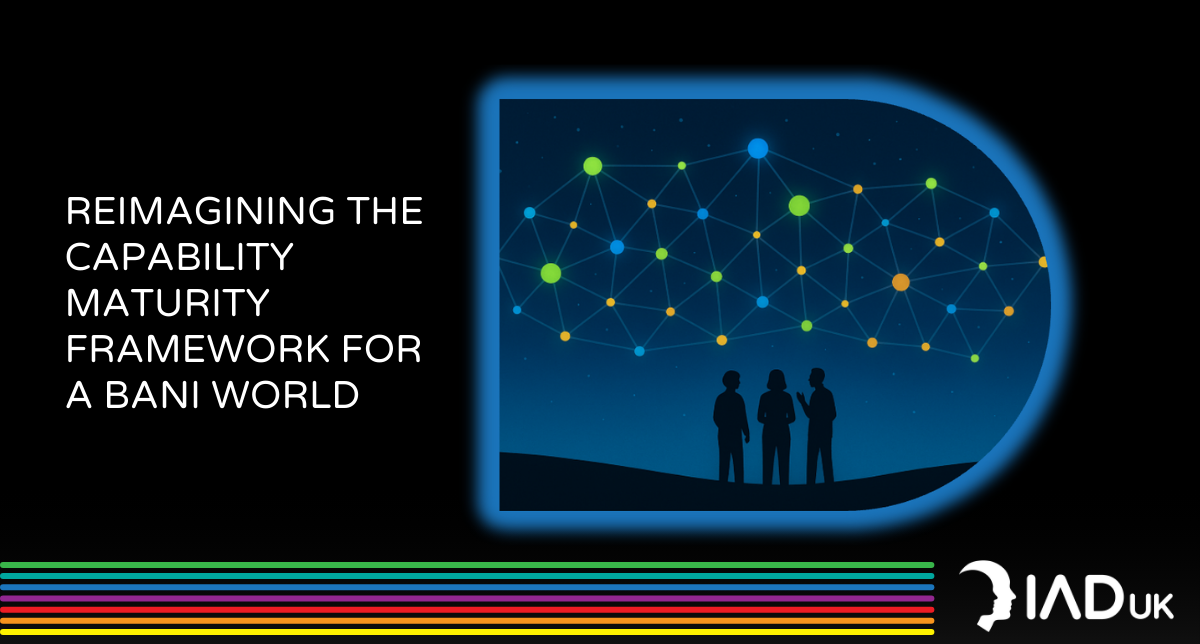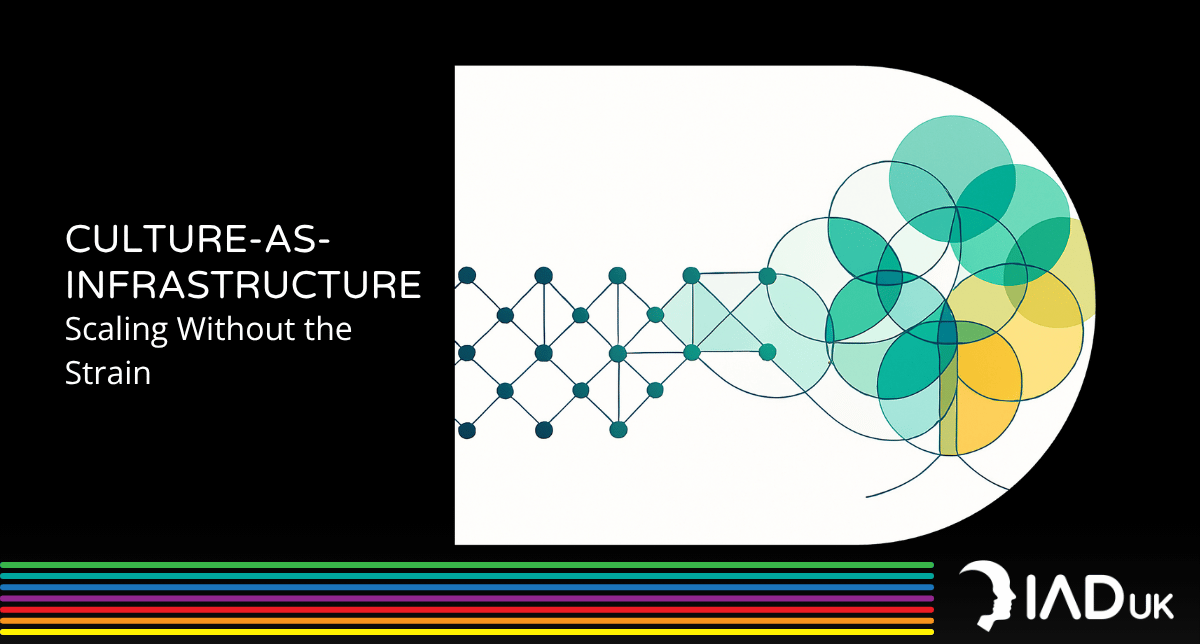The Seven Silent Killers of Strategic Change
Why Strategy Fails in a BANI World—And What It Takes to Execute in Complexity

Every organisation has a story like this.
A bright, well-intentioned leadership team invests heavily in strategic planning. They articulate compelling visions. They run workshops, launch new initiatives, and cascade the plan across the business. For a while, momentum builds.
Then something stalls. The strategy begins to fragment under pressure. Promises turn into platitudes. Leaders grow frustrated. Middle management retreats into inertia. And the most valuable people, the ones who once leaned in, start leaning out.
This breakdown is not a failure of intelligence, intent, or effort. It is a failure of fit.
In 2025, researchers Johanna Pregmark and Michael Beer revisited a familiar but still unresolved problem: why do so many smart organisations struggle to execute strategy? Their study reaffirmed a set of deeply entrenched internal barriers, what they called the seven silent killers of strategic change. These organisational dysfunctions aren’t new. What’s changed is the environment in which they operate.
We are no longer navigating a VUCA (Volatile, Uncertain, Complex, Ambiguous) world. We’ve entered a BANI one, Brittle, Anxious, Nonlinear, and Incomprehensible. In this context, even well-crafted strategies are strained to breaking point. Systems that once delivered stability now crack under subtle pressure. Feedback loops collapse. Human behaviour grows more reactive, less rational. The silent killers thrive in this terrain, because most organisations are still trying to solve dynamic problems with static tools.
At the Institute for Adult Development, we argue that no strategy can succeed in a BANI world unless the people tasked with delivering it are equipped to think, choose, and adapt at a fundamentally different level. Not just with more information, better tools, or slicker processes, but with deeper Dynamic Intelligence.
This article does not offer quick-fix solutions to the seven silent killers. Instead, it will examine them through a developmental lens, using BANI as a contextual frame, and explore how the Dynamic Intelligence Development System™ (DIDS™) helps transform the ground conditions in which these killers take root.
Because when strategies fail, it’s not always the plan that’s broken. It’s the
thinking behind its execution that can no longer hold.
From VUCA to BANI – Why the Terrain Has Shifted
For decades, leaders were taught to prepare for a VUCA world. Volatility, Uncertainty, Complexity, and Ambiguity became the cornerstones of strategic planning, risk management, and change leadership. In response, organisations built frameworks. They scenario-planned. They upskilled. They invested in agility programs and leaned on leadership models that promised to bring clarity and control.
But the world didn’t just get more volatile or more complex. It became something else entirely.
Enter BANI, a framework that recognises that today’s challenges are not merely faster, but qualitatively different:
- Brittle systems appear robust until, suddenly, they are not. One stressor, a market shock, a supply chain failure, a leadership exit, can snap what once seemed stable.
- Anxious workplaces are paralysed not by lack of data, but by too much noise. When the future feels fragile, decisions are delayed or delegated upwards. Responsibility becomes diffused. Trust erodes.
- Nonlinear dynamics mean small changes have disproportionate effects. Traditional planning falters. The link between cause and effect becomes obscured, making even evidence-based strategies feel impotent.
- Incomprehensible conditions produce patterns too complex to decipher. Leaders can no longer “read the room” because the room keeps reconfiguring. Even with vast data and sophisticated tools, insight remains elusive.
Where VUCA rewarded adaptability, BANI demands cognitive elasticity. The ability to not just act decisively, but to think dynamically, to reflect, reframe, and reconstruct meaning under pressure.
And this is where most organisational strategies, and their execution, fall short.
Most change initiatives still assume that if people just knew more, or communicated better, or worked harder, they’d succeed. But knowledge without insight is brittle. Communication without awareness is anxious. Hard work without reflection becomes reactive. In a BANI world, these traits become liabilities.
The terrain has shifted. What once felt like best practice now becomes friction. And within that friction, the seven silent killers begin to re-emerge, not as isolated dysfunctions, but as systemic expressions of a deeper developmental gap.
The question is no longer: How do we fix the strategy?
It’s: Are our people developmentally equipped to execute anything at all, in this environment?
The Seven Silent Killers: From Strategy to Systemic Signals
In organisations that struggle to deliver on strategic intent, the diagnosis is often incomplete. Symptoms are addressed, poor communication, leadership misalignment, execution delays, but the root dysfunction persists, returning in a different form. The result is a cycle of energetic initiatives that gradually stall, leaving behind fatigue, cynicism, and a quiet sense of failure.
In their 2025 study, Johanna Pregmark and Michael Beer confirmed a framework first published two decades earlier: a persistent set of internal dysfunctions they termed the silent killers of strategy execution. These are not surface-level errors, they are systemic breakdowns that most organisations cannot, or will not, name aloud.
The seven are:
- Top-down or laissez-faire leadership
- Unclear strategy, values, or conflicting priorities
- Ineffective senior management team
- Poor coordination across functions and silos
- Inadequate down-the-line leadership and general management skills
- Poor vertical communication
- Inadequate delegation of authority and decision rights
These killers are not new. But the context in which they operate has shifted dramatically. Once viewed through a VUCA lens, Volatility, Uncertainty, Complexity, and Ambiguity, these dysfunctions were considered manageable with better planning, communication, and alignment. Yet today’s world resists that narrative. Complexity has become something else. Volatility has crystallised into fragility. The problems haven’t changed; the environment has.
We now operate in a BANI world: Brittle, Anxious, Nonlinear, and Incomprehensible. This is not simply a matter of new terminology, it’s a shift in the very terrain organisations must navigate. In this new landscape, the silent killers don’t just persist, they deepen, becoming more elusive, more damaging, and harder to diagnose.
And so we must revisit these killers, one by one, not just to name them, but to understand:
- how they arise under VUCA assumptions,
- how they mutate and magnify in BANI conditions, and
- why the conventional responses organisations default to are not only insufficient, but sometimes make things worse.
What follows is not a technical manual. It is a strategic reckoning. Each killer, explored in turn, reveals not a gap in knowledge, but a gap in
development. Not a failure of systems, but a failure of sensemaking. And this distinction is everything.
Silent Killer 1: Top-Down or Laissez-Faire Leadership
Leadership dysfunction often hides in plain sight. It’s not always dramatic. Sometimes it’s a slow tightening of control, decisions funnelling upward until no one dares move without approval. Other times, it’s silence from the top, leaders stepping back, hands off, watching from the wings while teams scramble to fill the vacuum. Different expressions, same result: an organisation without coherent direction or shared confidence.
In a VUCA world, these behaviours were interpreted as over- or under-steering in the face of ambiguity. The prescription was balance: be more decisive, but also more empowering. Set a clearer vision, but stay agile. The assumption was that style correction would be enough to restore trust and flow.
But BANI reveals a deeper fault line. In systems that are brittle, leadership rigidity can snap under strain. In anxious cultures, indecision radiates downward like static. Both extremes, command-and-control and laissez-faire, are coping mechanisms, not strategies. They emerge when leaders can no longer hold complexity, or worse, no longer trust the organisation’s capacity to hold it with them.
What looks like a style problem is actually a
thinking problem, one rooted in insufficient developmental range. Leaders without the cognitive flexibility to engage paradox, facilitate sensemaking, and stay grounded in ambiguity will default to what feels safer: seize control or disappear.
The Conventional Response
The typical organisational reaction is to intervene at the surface:
- Replace the leader, hoping that a new style will shift the culture.
- Introduce coaching or leadership models, treating the issue as a question of technique.
- Mandate vision alignment initiatives, in hopes that cascading communication will trickle coherence downwards.
These responses make sense within a VUCA paradigm, after all, if the problem is “style,” surely a new one will work better. But in BANI, these interventions don’t touch the real issue. They address what the leader does, not how the leader thinks.
Why It Doesn’t Work
Replacing a leader without shifting the developmental culture of leadership simply swaps one flavour of brittleness for another. Coaching that focuses on skills but ignores thinking complexity results in temporary polish without sustainable change. Vision statements repeated from the top down become noise when the system beneath them cannot metabolise complexity.
In a brittle, anxious system, the only viable leadership is dynamic leadership. Leadership that can hold paradox. Leadership that doesn’t just direct, but develops. Leadership that can model the cognitive flexibility it seeks to cultivate.
Until that capacity exists, top-down or hands-off leadership will remain the only two moves on a very narrow board.
Silent Killer 2: Unclear Strategy, Values, or Conflicting Priorities
Confusion doesn’t always shout. Often, it’s embedded in the quiet contradictions of an organisation’s daily life: teams pulled in opposing directions, well-meaning initiatives that work at cross-purposes, values pinned to walls but absent from decisions. Leaders assume their strategy is clear because they’ve said it out loud. But clarity at the top doesn’t translate to coherence at the edge.
In a VUCA context, this problem was commonly understood as a communication issue. If volatility and ambiguity made things unclear, then the fix was to communicate more, cascade goals, publish values, simplify messaging. It was assumed that strategy failed because people didn’t understand it.
But in today’s BANI world, understanding isn’t enough. Strategy is not just a message to be delivered, it's a meaning to be constructed. And in anxious systems, meaning gets fragmented. Priorities begin to compete not because they’re poorly chosen, but because no one is holding the full context. Without the cognitive capacity to make sense of tension and hold nuance, people default to simplification, and simplification fractures alignment.
Conflicting priorities are not a failure of planning. They are the visible effects of an organisation struggling to integrate complexity.
The Conventional Response
To solve this, organisations reach for visibility and alignment:
- Rewriting strategy decks with bold visuals and crisper language.
- Running all-hands town halls to communicate the “why.”
- Implementing OKRs, hoping cascading goals will synchronise intent.
These actions can feel productive. They generate movement, signal intent. But too often, they reassert control over language without addressing the deeper problem: the developmental misfit between the strategy’s complexity and the organisation’s collective ability to metabolise it.
Why It Doesn’t Work
Clarity cannot be imposed, it must be co-created. No matter how polished the messaging, if individuals and teams cannot perceive the interdependencies within the strategy or understand how their role connects to the whole, they will default to what they know. Silos reassert themselves. Values become platitudes. The organisation fragments, not because it is disloyal, but because it is underdeveloped.
In a BANI landscape, strategy must be more than directional. It must be interpretable. That demands a shift not just in how strategy is communicated, but in how people are equipped to engage with it.
Without that shift, confusion remains, polished, branded, and deeply embedded.
Silent Killer 3: Ineffective Senior Management Team
They meet often. They talk a lot. They even like each other, most of the time. But something isn’t working. Decisions are delayed. Strategic tensions are papered over. Real disagreements are either avoided or played out politically. To the outside world, the senior management team looks aligned. But inside? Fragmentation.
Under a VUCA lens, this kind of dysfunction was chalked up to personality clashes, poor team dynamics, or lack of shared goals. The solution: build trust, improve collaboration, clarify roles. These are not unhelpful ideas, they’re just insufficient. Because the problem is rarely interpersonal. It’s cognitive.
In the BANI world, complexity has outpaced the team’s collective capacity to process it. What looks like misalignment is often incomprehensibility. Strategic issues feel unsolvable because they demand thinking that’s more fluid, more multi-dimensional, than the team can consistently hold. Each leader views the challenge through the lens of their function, their metrics, their survival instinct. The organisation needs synthesis. The team offers fragmentation.
And so the centre cannot hold, not for lack of effort, but for lack of
developmental coherence.
The Conventional Response
Most organisations respond by:
- Bringing in team coaches to build cohesion.
- Running strategy offsites to foster alignment.
- Conducting personality assessments to improve collaboration styles.
Again, these can help, up to a point. But they focus on interpersonal smoothness, not collective sensemaking. A team can get along brilliantly and still be entirely ineffective in navigating complexity.
Why It Doesn’t Work
In a brittle, anxious, and nonlinear world, alignment isn’t about agreement. It’s about the ability to hold contradiction, engage in generative conflict, and construct new perspectives together. That’s not a skill, it’s a capability that emerges only through development.
Without that capability, senior teams default to the path of least resistance. They become either overly harmonious (and avoidant), or chronically oppositional (and paralysed). Either way, strategy execution stalls because the system lacks the shared thinking complexity required to lead transformation.
A senior team’s true function isn’t decision-making, it’s
sense-making. When that breaks down, no amount of offsites will put it back together.
Silent Killer 4: Poor Coordination Across Functions and Silos
The product team is moving fast, the sales team is chasing numbers, and operations is quietly trying to hold it all together. Everyone’s busy. Everyone’s accountable. Yet somehow, nothing joins up. Projects slip between the cracks, efforts overlap, and problems ping-pong between departments. Coordination isn’t just inefficient, it’s incoherent.
In the VUCA era, this was largely seen as a structural or process problem. The solution? Build better systems. Restructure reporting lines. Implement collaboration tools. Create cross-functional tiger teams. The idea was simple: if you fix the flow, you fix the friction.
But in a BANI environment, flow is only part of the equation. The real challenge is nonlinearity. Small decisions in one silo can produce outsized, unexpected effects in another. Feedback loops are delayed, obscured, or lost altogether. Communication multiplies without improving understanding. And underneath it all is a deeper issue: most individuals aren’t trained, or developed, to think beyond their functional lens.
Coordination fails not just because the structure is wrong, but because the mental models people are using are too narrow to see the system.
The Conventional Response
Here, organisations often act with urgency:
- Investing in enterprise platforms to centralise data and projects.
- Mandating interdepartmental collaboration KPIs.
- Holding joint planning sessions to align timelines and objectives.
These tactics can be useful in tightly controlled environments. But under BANI conditions, they often become bureaucratic overlays, well-intentioned, but brittle under pressure.
Why It Doesn’t Work
When coordination is treated as a logistical problem, the solution is more meetings, more systems, more shared documents. But coordination is not just about scheduling, it’s about shared meaning. If people can’t perceive interdependencies, take multiple perspectives, and adapt their priorities in real time, no amount of tooling will create alignment.
In a nonlinear system, the space between functions is not empty, it’s alive with ripple effects. When thinking remains siloed, these ripples become ruptures.
The organisations that navigate this successfully don’t just connect teams. They develop people who can think across boundaries, people who can integrate rather than delegate the complexity.
Without that, collaboration will always be more slogan than substance.
Silent Killer 5: Inadequate Down-the-Line Leadership and General Management Skills
The strategy makes sense in the boardroom. It’s ambitious, well-structured, and sound. But further down the line, where the rubber meets the road, execution slows. Priorities get lost in translation. Mid-level managers struggle to adapt the strategy to their context or lead their teams through change. Good intentions are there. So is effort. But traction is missing.
In a VUCA framing, this is often seen as a skills gap. The environment is uncertain, the pressures are high, so the solution is to train better managers. Deliver leadership development workshops. Offer mentoring. Build a pipeline. Improve the “bench strength.”
But in a BANI world, this is no longer enough. Leadership isn’t failing due to lack of knowledge, it’s failing because the cognitive load has changed. Mid-level leaders are expected to make fast decisions with incomplete data, manage ambiguity, lead through turbulence, and coach their teams, all while translating complexity into action.
Anxiety mounts. Small missteps cascade into large setbacks, classic symptoms of
nonlinearity. Managers begin to burn out, second-guess themselves, or freeze. They aren’t underperforming because they’re unskilled. They’re underperforming because they’re
underequipped developmentally to handle the context they’ve inherited.
The Conventional Response
Most organisations respond with:
- Modular leadership development programmes focused on frameworks and communication tools.
- Succession planning initiatives, identifying high potentials based on historical performance.
- Mentorship schemes to transfer knowledge from experienced leaders.
All valuable, if the context were stable. But under BANI conditions, leadership isn’t about replication. It’s about reinvention in real time.
Why It Doesn’t Work
Teaching someone what “good leadership” looks like is one thing. Helping them think like a leader in complexity is another. When development is horizontal, adding skills, models, behaviours, it doesn’t build the vertical capacity required to lead through paradox, pressure, and unpredictability.
And so managers fall back on habit, heuristics, or hierarchy. They escalate decisions they should make. They dampen initiative. They become more reactive than responsive, not because they lack drive, but because they lack the internal scaffolding to support better judgement under stress.
In the absence of developmental depth, leadership becomes mimicry. And mimicry doesn’t hold up when the world won’t stop shifting.
Silent Killer 6: Poor Vertical Communication
It’s not that people don’t speak. It’s that they don’t say what matters. Ideas are filtered. Concerns are softened. The truth gets diluted as it moves upward, while strategy, vision, and rationale often descend as abstract concepts, disconnected from the daily pressures on the ground. Somewhere in the middle, understanding is lost.
In the VUCA narrative, this was often labelled a “communication gap.” The assumption: if leaders communicated more, and listened better, alignment would improve. Cue all-hands meetings, CEO video updates, anonymous surveys, and open-door policies. The belief was that better messaging would create better connection.
But in the BANI reality, messaging isn’t the issue. It’s meaning. In incomprehensible systems, signals become noise. Those closest to real-world complexity understand the challenges intimately, but they often lack the psychological safety or organisational language to express them upward. Meanwhile, senior leaders, insulated by layers of abstraction and anxiety, mistake silence for success or oversimplify what they hear.
This isn’t a communication problem. It’s a
developmental asymmetry. The levels of Dynamic Intelligence required to interpret and respond to each other’s realities are not evenly distributed, and that gap, unaddressed, becomes dysfunction.
The Conventional Response
Most organisations try to close the gap by:
- Launching pulse surveys or engagement dashboards.
- Increasing visibility through leader roadshows or AMA (ask me anything) sessions.
- Implementing communication platforms to flatten hierarchy and democratise access.
These tactics may increase the volume of data, but data isn’t dialogue. And when the ability to make sense of that data is limited, information becomes overwhelming rather than empowering.
Why It Doesn’t Work
Vertical communication is not just about flow. It’s about translation. A frontline insight must be expressed, understood, contextualised, and acted upon, all across different cognitive altitudes. If people don’t feel safe, or developmentally equipped, to articulate complex realities upwards, and if senior leaders can’t perceive nuance beneath the surface, the organisation starts to fly blind.
The result? Strategic misfires. Cultural drift. Low-trust environments where saying less becomes safer than saying what’s real.
True vertical communication isn’t transactional. It’s developmental. It requires people who can engage across perspectives, not just across levels.
Until that’s in place, silence, or worse, distorted noise, will remain the dominant signal.
Silent Killer 7: Inadequate Delegation of Authority and Decision Rights
It’s the bottleneck no one wants to name. Decisions get stuck at the top. Teams wait. Layers of approval pile up. Meanwhile, those closest to the problems feel disempowered, asked to own outcomes, but not trusted with choices. Leaders call it “risk management.” Teams call it “micromanagement.” The result is slow response, low accountability, and rising frustration.
When this pattern emerged more clearly in Pregmark and Beer’s 2025 research, it was a new addition to the original six. In the VUCA paradigm, it might have been interpreted as a structural inefficiency, something that could be solved with empowerment initiatives, flatter hierarchies, or Agile ceremonies. Just push decisions closer to the edge, and things will move faster. Simple.
But in a BANI world, delegation is anything but simple. Systems have become brittle, and decisions carry greater consequences. Nonlinearity means a small choice made in one corner can unleash unpredictable effects elsewhere. In this context, many leaders withdraw authority not out of control, but out of fear. They sense the system isn’t ready to absorb distributed decisions, and they’re often right.
The core issue isn’t structural, it’s
developmental readiness. Delegation requires a system that thinks well across all levels. Without that, authority becomes risky. Responsibility becomes hollow. And adaptability grinds to a halt.
The Conventional Response
Organisations eager to solve this tend to:
- Implement Agile frameworks, promising speed and empowerment.
- Encourage self-management, with minimal guidance.
- Launch OKRs and decentralised governance models, assuming clarity will follow autonomy.
These efforts may temporarily increase perceived ownership. But when cognitive maturity hasn’t been built in, autonomy without guidance becomes confusion, and speed becomes chaos.
Why It Doesn’t Work
Delegation is not a hand-off. It’s a transfer of meaning, judgment, and trust. Without the thinking complexity to handle ambiguity, trade-offs, and competing priorities, those receiving decision rights often default to hesitation or overconfidence. Neither builds momentum.
Empowering people before they’re developmentally equipped is not empowerment, it’s abdication.
This silent killer thrives in organisations that mistake structural flattening for cognitive levelling. The former is easy to roll out. The latter takes time, intention, and investment in how people think, especially under pressure.
Without that investment, decentralisation becomes fragility by another name.
The Silent Signals of Developmental Failure
What emerges across these seven dysfunctions is a pattern more profound than poor execution. These aren’t isolated breakdowns in leadership, strategy, coordination, or communication. They are expressions of a deeper, unspoken constraint, an organisation trying to meet BANI-level complexity with VUCA-era thinking, and falling short.
Each silent killer surfaces when the developmental capacity of the people within the system is misaligned with the demands of the environment. When context outpaces cognition, familiar fixes lose their grip. What once worked becomes friction. What once inspired becomes noise. And what once seemed like strategic failure is, in fact, a developmental inevitability.
The uncomfortable truth is this: most organisational dysfunction is not caused by what people are doing, but by how they are making sense of what they’re doing. The problem isn’t execution, it’s construction - in other words, how meaning, judgment, and response are formed moment to moment.
This is why the standard repertoire of responses, training, restructuring, communication strategies, software platforms, and leadership swaps, rarely works for long. These are horizontal interventions, applied to vertical problems. They improve capability without expanding capacity. They optimise behaviour without transforming the thinking that drives it.
So the question becomes: if we cannot change the terrain, how do we evolve the travellers?
To silence the silent killers, organisations don’t need better plans. They need better patterns of thought. Not stronger processes, but deeper perception. Not more tools, but more intentional choice in how those tools are used.
This is where the Dynamic Intelligence Development System™ offers something categorically different.
Rather than reacting to symptoms, DIDS™ alters the
ground conditions in which these dysfunctions thrive. It doesn’t patch broken systems, it grows the minds that shape them. And in doing so, it offers a path not out of BANI, but through it, with clarity, with coherence, and with the developmental strength to face complexity without retreat.
How DIDS™ Alters the Ground Conditions
Most organisational change efforts begin with what needs to be done. DIDS begins with how people think.
In complex systems, behaviour is downstream of cognition. The choices people make, how they lead, interpret strategy, coordinate across silos, or respond under pressure, are shaped by invisible patterns of thought: biases, assumptions, cognitive defaults, and perceptual blind spots. When these patterns remain unexamined, even the most sophisticated strategies falter. When they’re transformed, the system begins to regenerate from the inside out.
The Dynamic Intelligence Development System™ (DIDS™) is designed to do exactly that.
It doesn’t provide a blueprint for better leadership or a checklist for cultural alignment. Instead, it systematically cultivates the Dynamic Intelligence required to navigate complexity with clarity, agility, and depth. It develops the internal architecture needed to match the external complexity organisations face, not once, but continually.
At its core, the DIDS™ doesn’t teach people what to think, it develops how they construct their thinking in the moment. In doing so, it shifts the foundation on which all leadership, collaboration, and strategic execution rests.
DIDS™ cultivates four interdependent cognitive capacities:
- Intention –
the cognitive intent behind thought itself. These are the pre-conscious drivers that shape how individuals process reality, what they pay attention to, how they interpret situations, and what they prioritise in decision-making. When left unexamined, Cognitive Intentions can create blind spots or drive misaligned behaviour. When made visible and developed, they allow individuals and teams to act from a place of conscious construction, shaping their thinking to suit the demands of the moment.
- Awareness – the ability to
observe one’s own thinking in real time. This includes recognising internal biases, patterns, and perceptual filters, as well as sensing shifts in others. Awareness is the gateway to conscious development, it makes Intention accessible and actionable. Without it, the system reverts to automaticity.
- Choice – the capacity to
select and shift thinking deliberately. Rather than reacting from habit or stress, individuals with high Dynamic Intelligence can pause, weigh alternatives, and choose the most developmentally appropriate mental model or response. Choice expands agency, and with it, the possibility for innovation, alignment, and ethical action.
- Response – the outward expression of thinking in behaviour, speech, and decision. In a BANI world, effective response is neither fixed nor impulsive, it is context-responsive. It draws on developed Intention, real-time Awareness, and reflective Choice to act with precision, flexibility, and coherence under pressure.
Together, these four capacities form the scaffolding of Dynamic Intelligence, not just in individuals, but across teams and cultures. When embedded at scale, they transform not only how work gets done, but how organisations make sense of the work they are doing.
These aren’t leadership traits. They are the core architecture of cognitive maturity, preconditions for cultural health, strategic coherence, and resilient performance. They are what enable people at all levels to make sense of uncertainty, to act without rigidity, and to communicate across difference with depth rather than noise.
When individuals develop these capacities, the silent killers begin to lose their footing, not because they’ve been “solved,” but because the system now thinks differently. The distortions that once sustained dysfunction, misaligned intentions, unconscious reactions, narrow framing, reflexive escalation, simply don’t arise in the same way.
This is how DIDS™ alters the ground conditions. Not by replacing one framework with another, but by enabling people to meet complexity with clarity of purpose, conscious self-awareness, expanded agency, and constructive, adaptive response.
It doesn’t fix the organisation.
It helps the organisation grow up.
In practice, this means:
- Strategy becomes constructible, not just communicable.
- Leadership becomes intentional, not just positional.
- Culture becomes a living system, not a poster on the wall.
- Communication becomes translation, not transmission.
- Delegation becomes a transfer of trust, not a relinquishing of control.
And most importantly, organisations stop relying on reactive fixes and start building regenerative capacity, the ability to evolve from within, no matter how the external world changes.
This is not an incremental improvement. It is a shift in organisational consciousness.
In a BANI world, where complexity no longer waits for consensus, this kind of shift isn’t optional. It is foundational.
Conclusion: The Capacity to Construct Strategy
Most strategic failures aren’t caused by weak plans. They’re caused by insufficient thinking, not in volume, but in depth. Not in intelligence, but in structure.
The seven silent killers that stall change and fracture alignment are not just leadership gaps, communication flaws, or cultural missteps. They are developmental signals. They tell us where the organisation’s internal architecture is no longer sufficient for the complexity it inhabits.
We’ve moved beyond VUCA. The BANI world demands more than alignment and agility, it demands Dynamic Intelligence. It demands minds capable of intentional construction, real-time awareness, deliberate choice, and responsive action. Minds that can make meaning in motion. Minds that don’t just deliver strategy, but generate the conditions for strategy to succeed.
The silent killers don’t disappear because they’ve been named, mapped, or managed. They lose their grip only when the systems they depend on begin to evolve. And that evolution doesn’t start with structure. It starts with thinking, personal, social, systemic.
This is the role of the Dynamic Intelligence Development System™: not to patch dysfunctions, but to grow the people who grow the organisation.
So, before you invest in new leadership models, cultural interventions, or strategic rollouts,
Ask yourself:
Do we have the developmental depth to hold what we’re about to build?
Because if your people can’t construct complexity, they’ll never carry it.
Schedule a call to explore how the Dynamic Intelligence Development System™ can help your organisation overcome the seven silent killers of strategic change.
Alternatively, why not download your complementary copy of our new book:
An Introduction to the Dynamic Intelligence Development System™
Source: Johanna E. Pregmark and Michael Beer,The Silent Killers of Strategic Change in a VUCA World, AMP, https://doi.org/10.5465/amp.2024.0093




